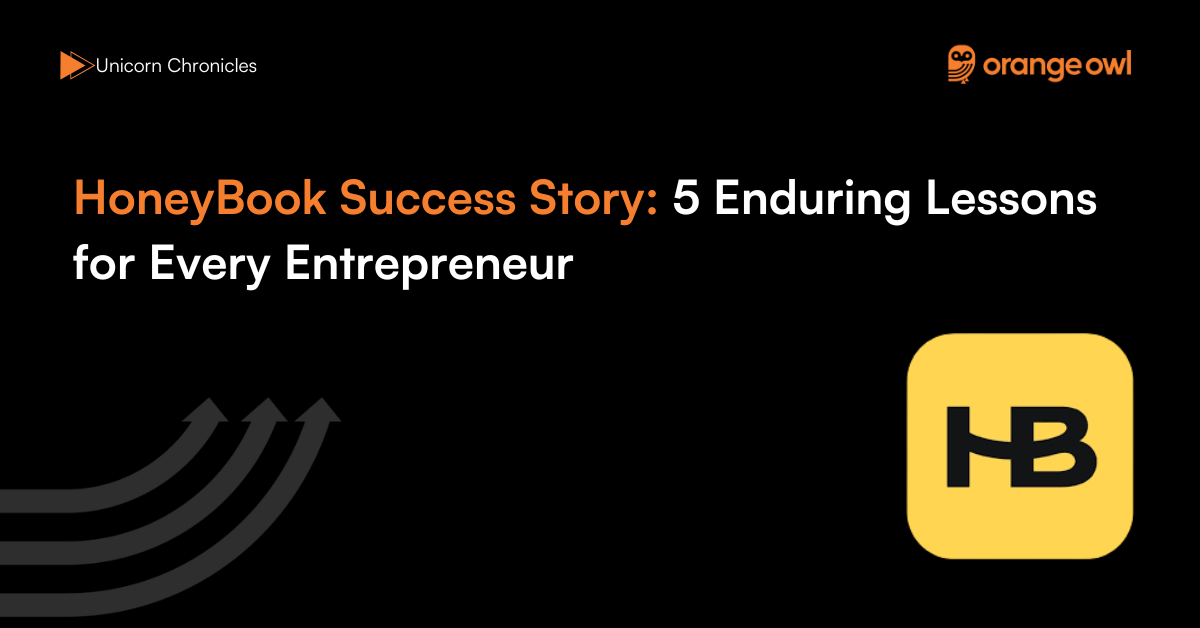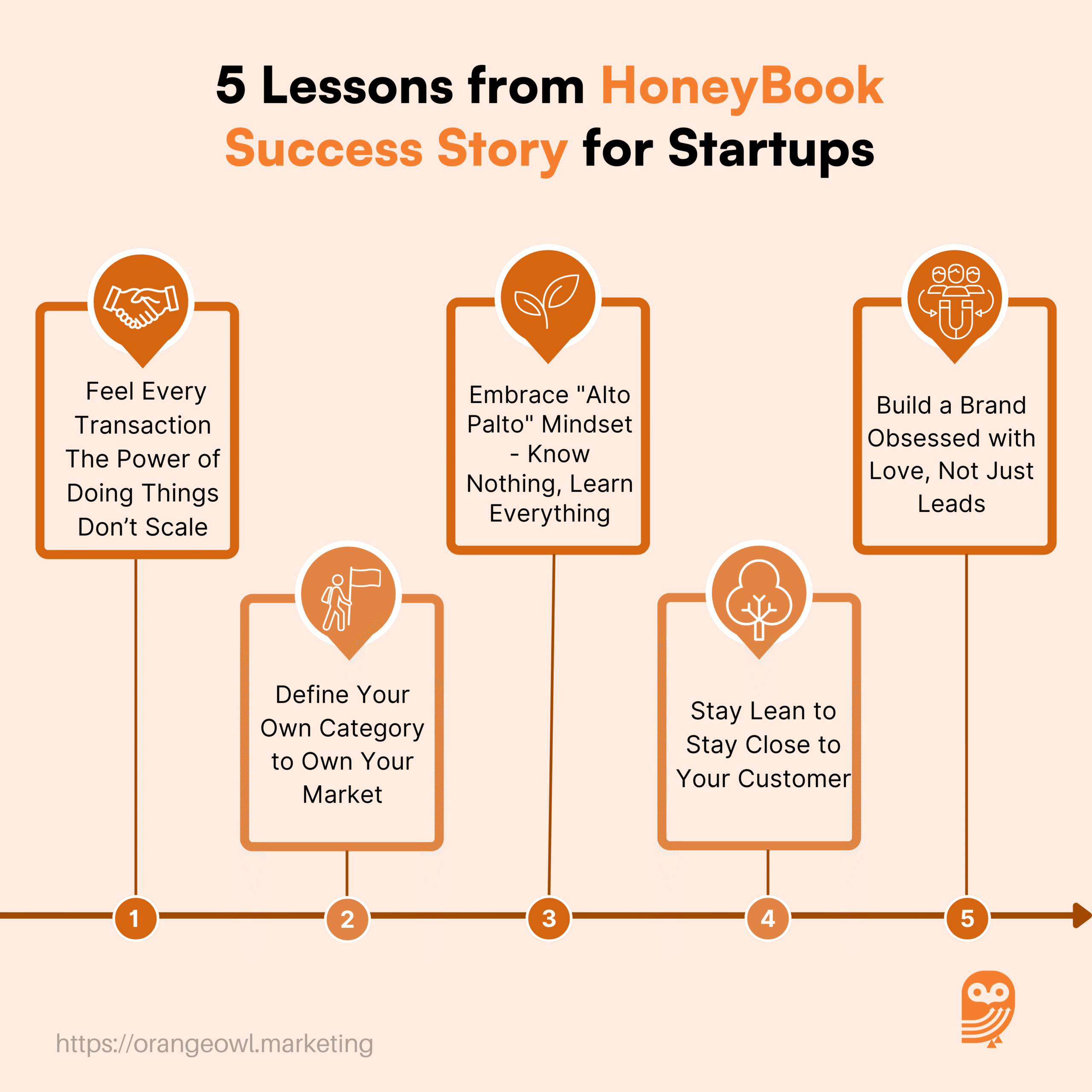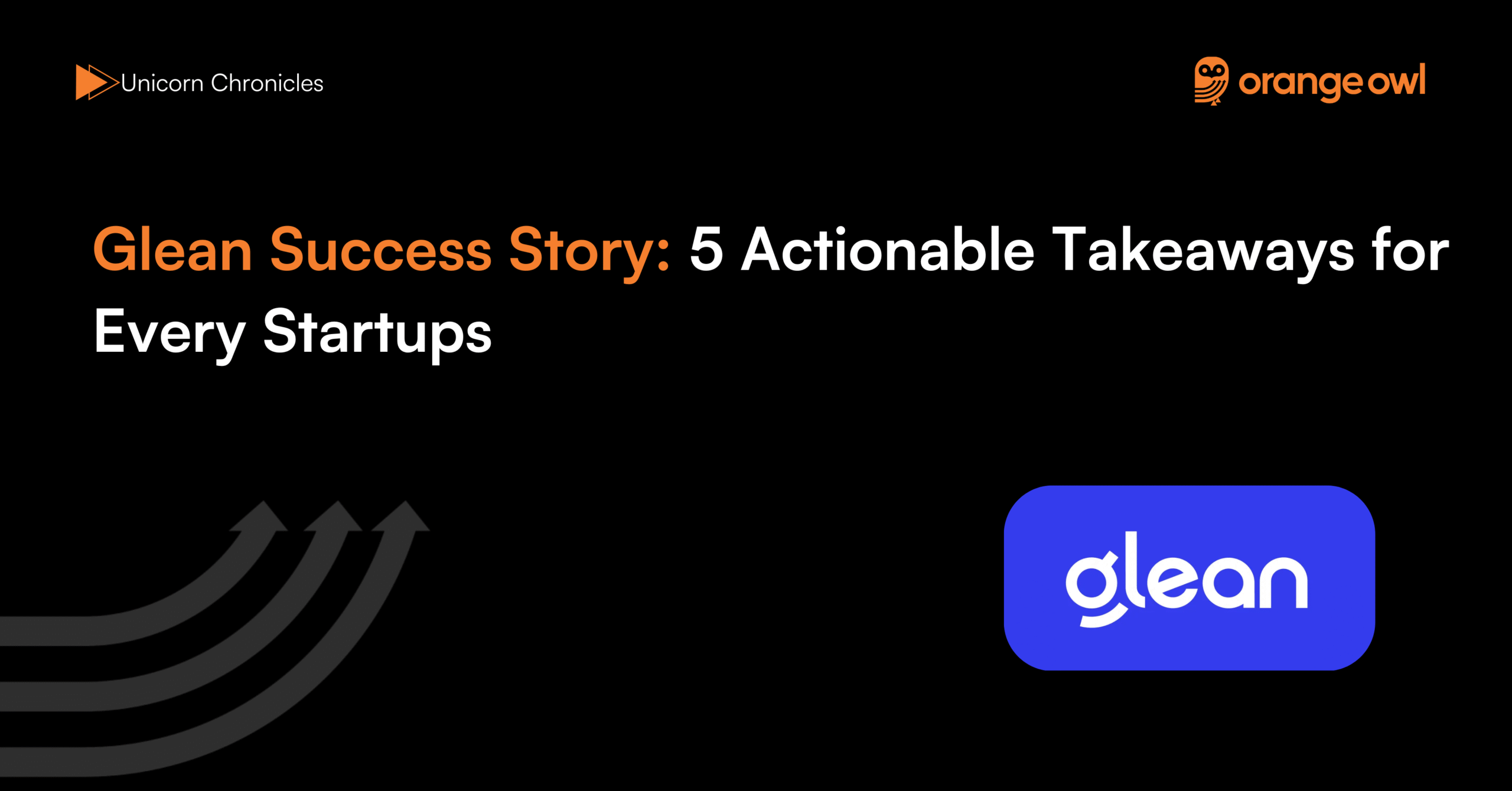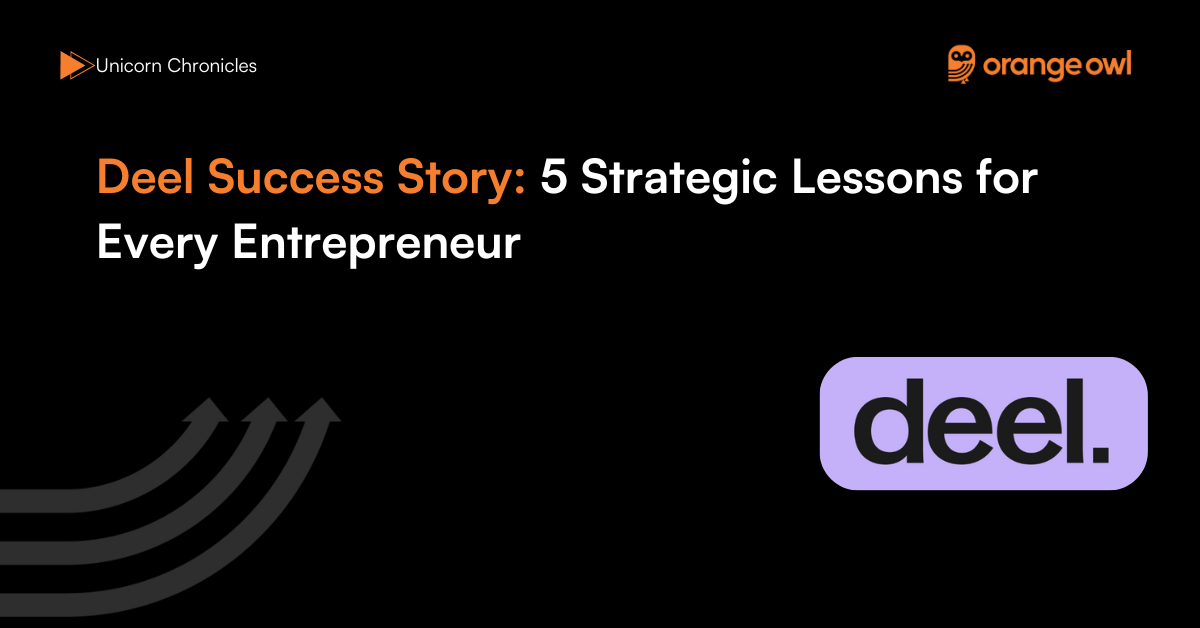HoneyBook Success Story: 5 Enduring Lessons for Every Entrepreneur
Vivek Goel
September 2, 2025

Table of Contents
Introduction: A Roadmap for the Modern Entrepreneur
In the dynamic and often tumultuous world of startups, a true success story offers more than just inspiration; it provides a tangible roadmap. This case study delves into the journey of HoneyBook, a company that transformed the operational chaos of independent businesses into a streamlined, elegant flow. For any entrepreneur, the path from a nascent idea to a market-leading platform is fraught with challenges, and the lessons learned along the way are invaluable. The HoneyBook story is a masterclass in customer-centricity, disciplined scaling, and authentic brand-building.
Founded in 2013, HoneyBook emerged from a simple, personal pain point experienced by its founders, Oz Alon and Naama Alon. Today, it stands as a titan in the creative and independent business economy. The company’s key metrics paint a vivid picture of its impact: a staggering $2.4 billion valuation , over $500 million in capital raised , and a thriving community of more than 100,000 members. With annual revenues surpassing $100 million, HoneyBook has achieved a scale that most startups only dream of. Yet, it has done so with a remarkably lean team of just 230 employees, a testament to its focus and efficiency.
This blog explores the critical decisions, strategic pivots, and foundational philosophies that propelled HoneyBook’s growth. The takeaways from its journey are not just theoretical but are grounded in the real-world experiences of its founders. From manually processing thousands of payments to intentionally staying small to remain close to customers, HoneyBook provides a compelling blueprint for building a durable, mission-driven business.
The Origin Story: From Personal Pain to a Powerful Platform
Every great startup begins with a problem that needs solving. For HoneyBook, that problem was deeply personal. Before HoneyBook, Oz Alon ran a design studio while his wife and co-founder, Naama, owned a bar. They were passionate service-based business owners who found themselves encumbered by the administrative friction of running their businesses. This disconnect led to the core realization that drove the company’s founding.
“There’s no platform for service-based businesses to sell their services, to communicate in a modern way with their clients, to accept online payments.”
The journey took a dramatic and defining turn when an early investor in Tel Aviv offered them a critical lifeline of $25,000, but with a significant condition: they had to move to Palo Alto. Oz vividly recalls his unfamiliarity with the Silicon Valley epicenter, telling his wife and co-founder they had to move to B a mispronunciation he now uses as a metaphor for the steep learning curve inherent in the life of an entrepreneur. This experience taught him a crucial lesson about the need for constant learning.
“You need to kind of get used to the fact that you just know nothing and you just need to learn as fast as you can.”
A week later, they were in Palo Alto. This move was transformative, immersing them in the ambitious mindset of Silicon Valley, where they met investors who, as Oz describes, actually believe that you’re going to build one as well you know while you don’t.
Business Landscape and Key Challenges
When HoneyBook entered the market, it wasn’t facing a single, dominant competitor. Instead, its primary adversary was inertia: the fragmented, inefficient, and often analog systems that independent business owners had cobbled together out of necessity. The landscape was a chaotic mix of email for communication, Word documents for proposals, physical checks for payments, and spreadsheets for financial tracking. This created a significant administrative burden that detracted from the core work these professionals loved: their craft.
HoneyBook’s first major challenge was to prove its value in a market that didn’t even know it needed a unified solution. The concept of a “client flow platform” didn’t exist yet, so they had to educate their audience while simultaneously building the product.
The second, and perhaps more formative, challenge was operational. To get to market quickly and validate their core assumption—that people would pay through their platform—they made a now-famous decision to “do things that don’t scale “. Before the backend payment infrastructure was fully automated, Oz Alon took on the Herculean task of manually processing every single transaction himself, handling 1,743 individual payments.
While operationally grueling, this period was fundamentally important. It forged an unbreakable bond between the founder and the core function of his business. This early, hands-on struggle became a cornerstone of the company’s customer-centric culture and provided one of the most powerful lessons of this success story.
Growth Strategic: HoneyBook Success Story
HoneyBook’s ascent from an early-stage startup to a profitable market leader with over $100 million in annual revenue was not accidental. It was the result of several deliberate strategies designed for sustainable, long-term growth.
1. Extreme Member-Centricity Forged in Fire:
The foundation of HoneyBook’s growth strategy is its unwavering, almost obsessive focus on its members. This philosophy was born during the early days of manual transaction processing. By handling every payment, Oz gained an unparalleled understanding of his customers’ businesses where he got to see and feel every single transaction. This direct connection meant he knew who was getting paid and, more importantly, who wasn’t. If he noticed a member’s name hadn’t appeared recently, he would proactively ask his team to check on them, often discovering and resolving a point of friction or frustration. This hands-on approach embedded a deep sense of empathy into the company’s DNA.
2. Defining a New Category – The Power of Client Flow:
A major strategic insight was recognizing that existing software categories didn’t accurately describe what HoneyBook did. They weren’t just a CRM, an invoicing tool, or a payment processor; they were all of those things integrated into a single, seamless experience. To capture this unique value proposition, they coined the term “Client Flow “. Oz explains that a client flow is the service-based business’s equivalent of an “online store for an e-commerce business “. It encompasses the entire client journey, from the initial inquiry and proposal to the contract, invoice, and final payment.
Creating this new category was a brilliant strategic move. It allowed HoneyBook to:
- Differentiate Itself: It immediately set them apart from point solutions and generic business tools.
- Educate the Market: The term gave a name to the problem their customers were experiencing, making the value of an integrated solution much clearer.
- Own the Narrative: By defining the category, HoneyBook became the default leader and expert in that space.
3. Disciplined Scaling and Deliberately Lean Operations:
In a startup culture often defined by a “growth-at-all-costs” mentality, HoneyBook chose a different path. Despite raising over $500 million in funding, the company has intentionally maintained a lean team of around 230 employees. This is not a sign of slow growth but a deliberate strategic choice.
“It’s important for us to stay as lean and small as we can so we can stay as close as we can to them.”
By avoiding the bloat that can come with large funding rounds, HoneyBook has maintained its agility, efficiency, and its cultural connection to the small entrepreneurs it serves.
4. Strategic Fundraising as a Tool for Trust:
For HoneyBook, fundraising was about more than just capital; it was about building a fortress of trust. When you are managing your members’ client relationships and, critically, their cash flow, reliability is paramount. The significant funding rounds, including their Series E, were essential to making long-term investments in security and infrastructure, allowing them to continue their mission with stability.
“We can keep building and creating value with a lot of confidence for our community.”
Marketing Strategy: A Brand Built on Love
HoneyBook’s marketing is a direct reflection of its core values. Instead of relying on aggressive, feature-focused advertising, the company has cultivated a powerful brand built on community, trust, and a concept that Oz frequently mentions: love.
1. A Brand That Starts from the Inside Out:
The marketing strategy begins with the company’s internal culture. Oz firmly believes that the foundation of an authentic brand is its people.
“Real Brands start there with your employees.”
The values that guide the team at HoneyBook; an obsession with member success and empathy; are the same values that are communicated externally.
2. “An Obsession with Love” as a Core Metric:
The key performance indicator for the HoneyBook brand is the affection of its members. Oz is candid about this emotional goal, even if it sounds unusual.
“We are all people that care about the fact that our members love us.”
This isn’t just a feel-good sentiment; it’s a business driver. He explains that the team takes feedback to heart, and a negative review is a powerful call to action that “motivates us to fix it and do whatever needs to be done “. This emotional feedback loop, where customer sentiment directly influences team morale and product priorities, is the engine of their marketing.
3. Simplifying the Message: The “Four Cs”:
To cut through the noise and clearly communicate their value to busy entrepreneurs, HoneyBook focuses on a simple, powerful framework: the “Four Cs.” A service business owner must manage their Clients, their Cash, their Calendar (time), and their Craft. HoneyBook’s marketing promise is elegantly simple, allowing the business owner to focus on what they do best.
“The craft is yours, that’s your superpower.”
While specific industry awards are not detailed in the founder’s account, the company’s most significant accolades are its impressive growth metrics and, more importantly, the enduring loyalty and “love” expressed by its thriving community of over 100,000 independent business owners.
5 Innovative Lessons & Takeaways for Every Entrepreneur
This HoneyBook case study offers a wealth of actionable lessons for founders and business leaders at any stage. The following five takeaways encapsulate the core philosophies that drove the company’s success.
1. “Feel Every Transaction” – The Power of Doing Things That Don’t Scale:
The story of Oz manually processing 1,743 payments is perhaps the single most important lesson from HoneyBook’s early days. In an era obsessed with automation, this counterintuitive approach gave HoneyBook its soul. Don’t be afraid to get your hands dirty. In the beginning, the goal is not efficiency; it’s learning. By manually handling core processes, you gain an intuitive understanding of your customers’ needs. Oz’s advice is a powerful reminder that the richest insights come from direct experience, not from a dashboard. He advises every entrepreneur to
“try to tie yourself into the core of the business “.
This unscalable effort is what builds a scalable foundation of empathy.
2. Embrace the “Alto Palto” Mindset—You Know Nothing, So Learn Everything:
The “Alto Palto” anecdote is more than just a funny story; it’s a powerful metaphor for the mindset required to succeed as an entrepreneur. It represents the humility to admit what you don’t know and the relentless drive to learn it as quickly as possible. Your job as a founder is constantly evolving. The skills that got you from zero to one are not the same skills that will get you from one to one hundred. As Oz puts it,
“Every day you need to learn a new skill, a new thing “.
Cultivate a culture of intense curiosity and continuous learning. The most successful founders are not those who know the most, but those who learn the fastest.

3. Build a Brand Obsessed with Love, Not Just Leads:
HoneyBook’s marketing strategy is a masterclass in modern brand-building. They prioritized emotional connection over traditional lead generation tactics, creating a brand that customers don’t just use, but actively champion. The goal was to be loved. Your brand is the sum of every interaction a customer has with your company. It starts with your internal culture. As Oz states, the foundation is your team, because “real Brands start there with your employees “. Make customer happiness or even “love” a key metric. Empower your team to solve problems and create delightful experiences. When a customer feels genuinely cared for, they become your most powerful marketing channel.
4. Define Your Own Category to Own Your Market:
HoneyBook didn’t try to fit into the predefined boxes of “CRM” or “invoicing software .” Instead, they created and evangelized the concept of “Client Flow,” a term that perfectly captured the holistic nature of their solution. If you are building something genuinely new, don’t be afraid to create a new language to describe it. Defining your own category allows you to frame the conversation and position your company as the undisputed leader. It shifts the focus from a feature-by-feature comparison with competitors to a discussion about a larger, more strategic solution that only you provide.
5. Stay Lean to Stay Close to Your Customer:
In a landscape littered with startups that raised massive rounds only to implode under the weight of their own overhead, HoneyBook’s disciplined approach to growth is a critical lesson in sustainability. With 230 employees generating over $100 million in revenue, their capital efficiency is remarkable. Headcount is not a measure of success. A smaller team can be more agile, more aligned, and more in tune with its customers. The reason for staying lean was a deliberate choice to “stay as close as we can to them,” referring to their small business customers. This discipline ensures that you build a resilient company that can weather market downturns and stay true to its mission.
Conclusion: A Durable Success Story
The journey of HoneyBook from a shared frustration to a $2.4 billion powerhouse is a definitive success story for the modern era. It serves as a vital case study for any entrepreneur looking to build a business with both profit and purpose. The company’s trajectory was not defined by shortcuts or growth hacks, but by a relentless commitment to foundational principles: an authentic obsession with the customer, the courage to forge a new category, and the discipline to scale thoughtfully.
The core lessons from Oz Alon and his team are both timeless and incredibly relevant. The willingness to do the hard, unscalable work in the beginning laid a foundation of empathy that continues to pay dividends. The humility to embrace a constant state of learning allowed the leadership to evolve alongside the company. The focus on building a brand that inspires genuine “love” created a moat that competitors find difficult to cross. Finally, the strategic decision to remain lean has kept them agile and deeply connected to the community they serve.
HoneyBook’s rise demonstrates that it is possible to achieve massive scale without losing your soul. It proves that in the world of software and startups, the most powerful and enduring products are those built with a deep sense of responsibility and a genuine desire to improve the lives of the people they serve. For entrepreneurs navigating their own paths, the HoneyBook story is more than just inspiring; it is a practical guide to building a company that lasts.


